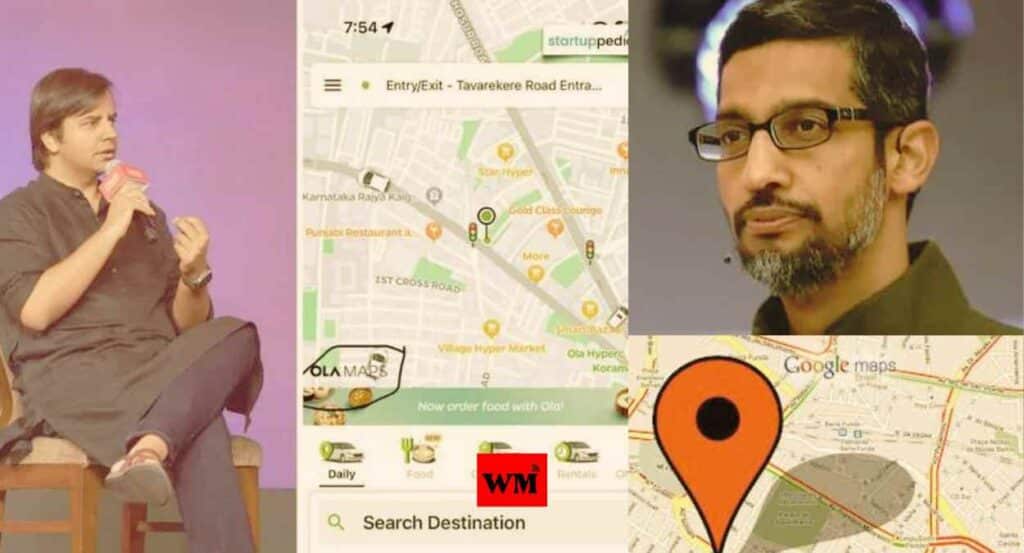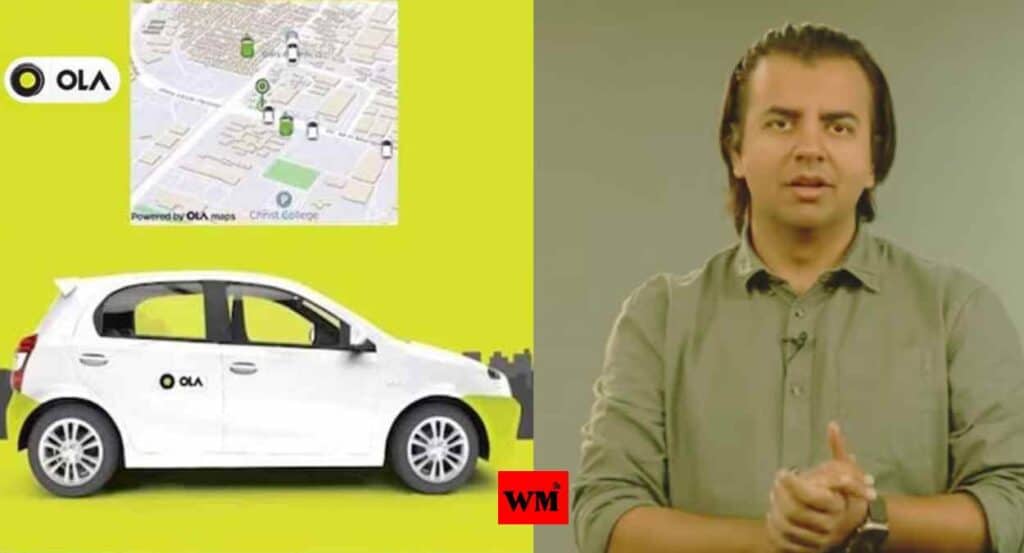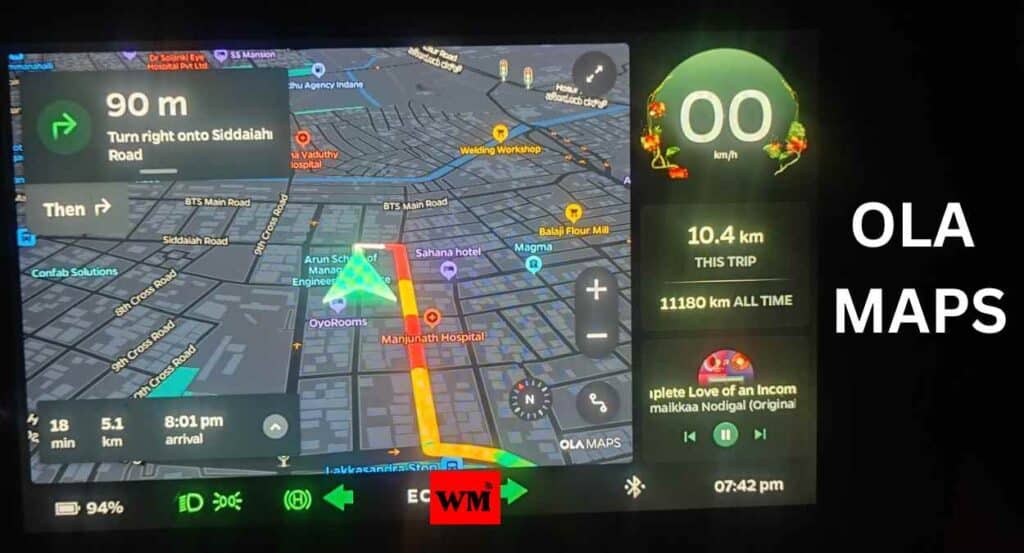
Ola’s Rs 100 Crore Gamble: Ditching Google for Home-Grown Ola Maps
Ola, India’s ride-hailing giant, has just made a bold move that’s turning heads in the tech world. They’ve bid farewell to Google Maps, replacing it with their very own Ola Maps. This switch isn’t just about independence – it’s a smart business decision that’s set to save Ola a whopping Rs 100 crore annually.
But what’s the real story behind this shift? How will it impact Ola’s services? And what does it mean for the future of mapping technology in India?
Let’s dive in and explore this exciting development that’s reshaping the landscape of ride-hailing and tech innovation in the country.

Ola’s Big Leap: From Google Maps to Ola Maps
The Announcement That Shook the Tech World
On July 5, 2023, Bhavish Aggarwal, the CEO of Ola, dropped a bombshell on Twitter. He announced that Ola had completely transitioned from Google Maps to their in-house solution, Ola Maps. This move came hot on the heels of Ola’s exit from Microsoft’s Azure platform just a month earlier.
The Financial Impact: A 100 Crore Saving
Aggarwal’s tweet revealed a staggering figure: Ola used to spend Rs 100 crore annually on Google Maps. By switching to their own mapping service, they’ve essentially reduced that expense to zero. This isn’t just a cost-cutting measure; it’s a strategic move towards self-reliance and innovation.
The Tech Behind Ola Maps
Ola Maps isn’t a new project. It’s been in development since at least 2021 when Ola acquired GeoSpoc, a Pune-based geospatial services provider. This acquisition laid the groundwork for Ola’s ambitious mapping project.
Features on the Horizon
Aggarwal didn’t stop at announcing the switch. He teased several exciting features coming to Ola Maps in the near future:
- Street view
- Neural radiance fields (NERFs)
- Indoor images
- 3D maps
- Drone maps
These features suggest that Ola is aiming to create a comprehensive mapping solution that could potentially rival or even surpass Google Maps in certain aspects.
The Bigger Picture: Ola’s Tech Independence Journey
Cutting Ties with Big Tech
Ola’s exit from Google Maps is part of a larger trend of the company seeking tech independence. In May 2023, Ola made headlines by moving its entire workload from Microsoft Azure to its own AI platform, Krutrim.
The Drive Towards Data Sovereignty
Aggarwal has been vocal about the need for India to have its own full technology stack, including:
- AI models
- Cloud infrastructure
- Data centers
- Chips
He argues that this is crucial for India to lead the AI revolution and reduce dependence on big tech firms.
The Data Dilemma
Aggarwal points out a striking statistic: India generates 20% of global data but only stores 3% of it within the country. This disparity underscores the need for data sovereignty, where both the location and control of data remain in India.

Impact on Ola’s Services
Seamless Transition for Users
Ola has assured its users that the transition to Ola Maps will be smooth. The company has asked users to check their Ola app and update if needed, suggesting that the change might already be live for many users.
Integration with Electric Vehicles
Interestingly, Ola had announced plans to roll out Ola Maps to its electric two-wheelers as part of a software update in January 2023. This integration shows Ola’s commitment to creating a unified ecosystem across its various products and services.
The Broader Implications for India’s Tech Ecosystem
A Call for Tech Independence
Ola’s move is more than just a business decision; it’s a call to action for India’s tech industry. Aggarwal has invited other developers to move away from Azure, offering a full year of free cloud usage on Krutrim.
Potential for a New Tech Hub
If successful, Ola’s strategy could position India as a new hub for tech innovation, particularly in areas like mapping, AI, and cloud services.
Challenges Ahead
While the move is ambitious, it’s not without challenges. Developing and maintaining a mapping service that can compete with established players like Google will require significant investment and continuous innovation.
Ola’s Future Plans: Beyond Mapping
Solid-State Batteries: The Next Frontier
While Ola is making waves with its mapping technology, the company isn’t stopping there. Ola Electric, a subsidiary of the Ola Group, is making significant strides in the development of solid-state batteries for its electric scooters.
Key Points:
- Ola aims to power its electric scooters with solid-state batteries by next year
- The company is in the early stages of experimentation
- Production is planned at their Tamil Nadu gigafactory
The Gigafactory Project
Ola’s gigafactory in Tamil Nadu is not just for battery production. It’s part of a larger initiative backed by the Indian government to boost local manufacturing capabilities and reduce dependency on imports.
Advantages of Solid-State Batteries
Compared to traditional lithium-ion batteries, solid-state batteries offer:
- Enhanced safety features
- Longer lifespan
- Faster charging times
However, widespread adoption faces challenges due to:
- Limited raw material availability
- Complex manufacturing processes
- High costs
The Road Ahead: Challenges and Opportunities
Competing with Established Players
While Ola’s move is bold, it puts them in direct competition with tech giants like Google. The challenge will be to create a mapping service that’s not just cost-effective but also competitive in terms of accuracy, features, and user experience.
Potential for Innovation
By controlling its mapping technology, Ola has the opportunity to innovate in ways that are specifically tailored to the Indian market. This could include features like:
- Better navigation through congested areas
- Integration with local landmarks and points of interest
- Real-time traffic updates specific to Indian road conditions
Data Privacy and Security
With data sovereignty being a key driver of this move, Ola will need to ensure robust data privacy and security measures. This could be a significant selling point for users concerned about how their data is used and stored.

Frequently Asked Questions (FAQs)
Q. Why did Ola decide to create its own mapping service?
A. Ola created its own mapping service to save costs (around Rs 100 crore annually), gain technological independence, and tailor its services specifically for the Indian market.
Q. How will Ola Maps differ from Google Maps?
A. Ola Maps is expected to offer features like street view, neural radiance fields, indoor images, 3D maps, and drone maps, potentially tailored more specifically for Ola’s services and the Indian market.
Q. Will the switch to Ola Maps affect the user experience?
A. Ola has assured a smooth transition for users, asking them to update their app if needed. The company aims to provide a seamless experience comparable to or better than Google Maps.
Q. Is Ola working on any other technological advancements?
A. Yes, Ola is also developing solid-state batteries for its electric scooters and has its own AI platform called Krutrim.
Q. How does this move align with India’s tech ambitions?
A. Ola’s move aligns with the push for data sovereignty and technological self-reliance in India, potentially positioning the country as a hub for tech innovation.
Q. What challenges might Ola face with its own mapping service?
A. Ola may face challenges in maintaining accuracy, keeping up with rapid urban changes, and competing with established players like Google in terms of features and user experience.
Q. How does this affect Ola’s relationship with big tech companies?
A. This move, along with Ola’s exit from Microsoft Azure, indicates a shift towards tech independence and reduced reliance on big tech companies for critical infrastructure.

Conclusion
Ola’s decision to replace Google Maps with its own Ola Maps is a game-changing move that goes beyond just saving money. It’s a bold statement of technological independence and a significant step towards creating an Indian tech ecosystem.
As Ola continues to innovate in areas like mapping, electric vehicles, and battery technology, it’s positioning itself not just as a ride-hailing company, but as a tech powerhouse.
The success of this venture could have far-reaching implications for India’s tech industry and its role in the global digital economy. As users, we can look forward to more tailored, innovative solutions that cater specifically to the Indian market. The road ahead may be challenging, but it’s undoubtedly exciting.
Disclaimer:
The information provided in this article is based on publicly available sources and statements from Ola executives. AI Wini does not claim any insider knowledge or affiliation with Ola. Readers should verify information independently before making any decisions based on this content.
Also Read:
Meet Prafulla Dhariwal: The Pune Prodigy Behind OpenAI’s Revolutionary GPT-4o
The Alarming Rise of Neurological Disorders: A Global Health Crisis
Google’s Urgent Warning: Is Your Google Drive Data Really Safe?
Meet Devin, The AI Software Engineer Shaping the Future of Coding
Deepfakes: The New Face of Online Misinformation and How to Tackle It






























